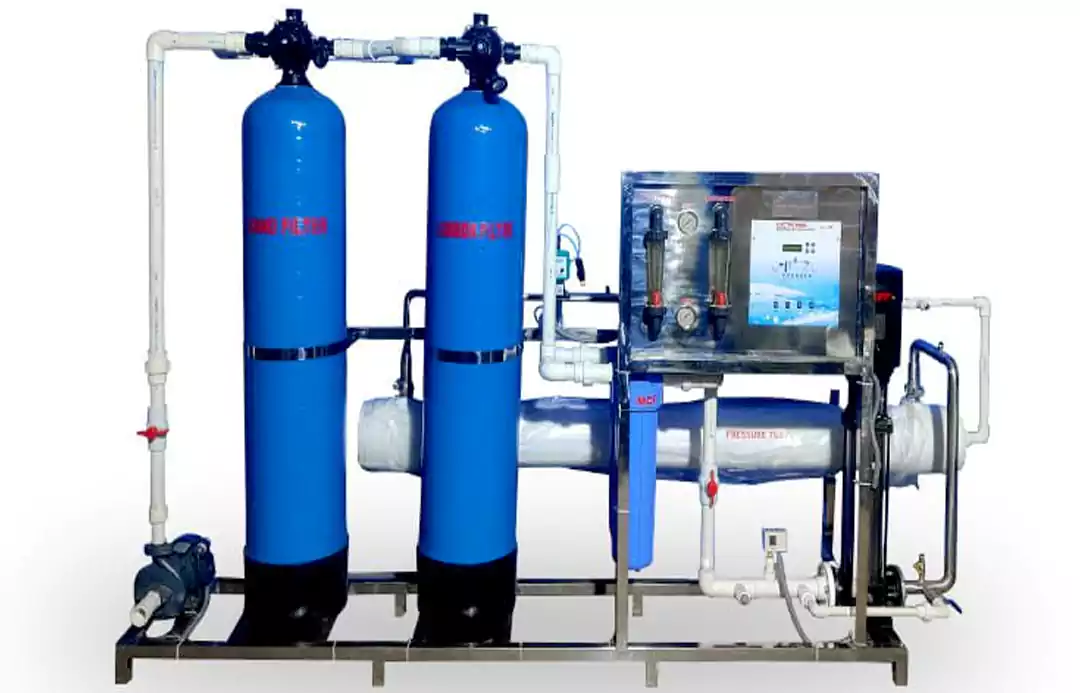A Reverse Osmosis (RO) plant is a specialized facility designed to purify
water through the process of reverse osmosis, which involves the
movement of water molecules across a semi-permeable membrane. This
process is driven by applying pressure to the feed water, which forces it
through the membrane, allowing only water molecules to pass while
rejecting larger molecules, ions and various contaminants. The operation
of an RO plant begins with the careful pre-treatment of the feed water,
which is essential to protect the membranes from scaling. Pre-treatment
methods may include sedimentation, filtration and the addition of
chemicals to remove suspended solids, microorganisms and other
impurities that could hinder the efficiency of the system. Once the feed
water is adequately prepared, it is pumped into the RO system at high
pressure, typically ranging from 50 to 1000 psi,based on the unique
properties of the feed water and the required level of purity. High
pressure is essential to overcome the natural osmotic pressure and
enable water to flow through the membrane. During this process, the
water is divided into two streams namely the permeate, which is the
purified water and the concentrate, which contains the rejected
impurities. The design of an RO plant often incorporates multiple stages
of filtration, where water is passed through several membranes in series
or parallel configurations to enhance the overall purification efficiency.
The operational parameters of the RO plant such as flow rates, pressure
and temperature, are continuously controlled to ensure suitable
performance.
Regular maintenance is vital to prevent scaling on the membranes,
which can significantly reduce the system efficiency. This maintenance
may involve periodic cleaning of the membranes using chemical
solutions to restore their permeability. Additionally, the RO plant must
comply with local environmental regulations regarding the disposal of
concentrate and other waste products, ensuring that the discharge does
not adversely affect the surrounding ecosystem. As global water scarcity
becomes a more pressing issue, the role of RO plants in providing a
reliable source of clean water is increasingly recognized. The technology
behind reverse osmosis continues to advance, with ongoing research
focused on improving membrane materials, enhancing energy efficiency
and reducing operational costs, thereby making RO plants a vital
component of modern water treatment strategies.
Elaboration for each component of a Reverse Osmosis (RO) plant:
